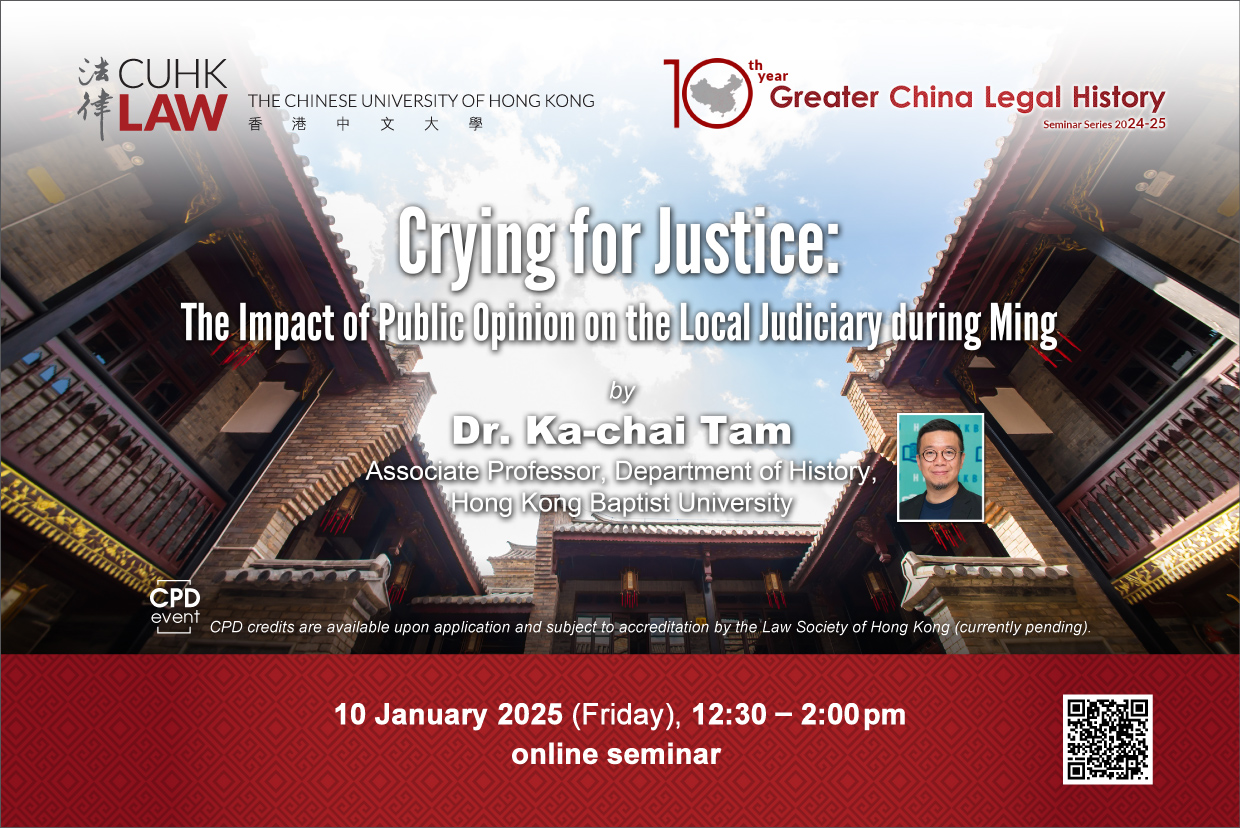活動
Greater China Legal History Seminar Series – ‘Crying for Justice: The impact of public opinion on the local judiciary during Ming China’ by Dr. Tam Ka-chai (Online)
2025年1月10日
12:30pm – 2pm
Online via ZOOM
Dr. Tam Ka-chai
TAM Ka-chai published in recent years three books on Chinese legal history, namely, Justice in Print: Discovering Prefectural Judges and their Judicial Consistency in late Ming Casebooks (Brill, 2020), Ming Zhongwanqi de falü shiliao yu shehui wenti 明中晚期的法律史料與社會問題 (Wanjuanlou 萬卷樓, 2020) and The Spread and Restrictions of Catholicism under the Judicial Perspective in Ming and Qing China 天道廷審—明清司法視野下天主教的傳播與限制 (co-authored in Chinese, HK CityU Press, 2021). Before reading his D.Phil. in Oriental Studies at the University of Oxford, he had studied at the Chinese University of Hong Kong and received his B.A. (Hons) History and M.Phil. After teaching and researching in the Hong Kong Polytechnic University and CUHK, he has been serving in the Department of History, the Hong Kong Baptist University, and now as an Associate Professor. Alongside legal history, his areas of interest include maritime and transportation history of East Asia from 14th to 21st centuries, and the development of Historical Geographical Information System.
The local judicial court of Ming China is basically an open system, as judicial procedures are all open to the public without much restrictions. Although there are requirements of solemn silence for the observers, but no strict restrictions are enforced to prohibit the family members and neighbours of the two sides to cry for justice. In the due course of the hearing, the observing neighbours of the accused sometimes might also be summoned to comment and even guarantee the integrity of the accused, so that the judge might measure the degree of punishments accordingly. Moreover, after the local courts made the decision, the case should usually be submitted to higher courts for review, and in the meantime the judges often would post their reports of the case in front of the gate of the court, and therefore the two sides and the public could understand the decisions and undertake their respective follow-up actions. By exposing the judicial process to the public, the Ming judicial system on one hand prevents the personal domination of the judge, on the other hand is a design to invite the common people to be involved in the judiciary. This talk employs the judicial reports collected in late Ming times to investigate how the local judges’ decisions might have been influenced by the openness of their courts, as well as how they dealt with the contradictions among the principles of the law, the materials evidences, witness reports and the public opinions of the locality.
Language: English


